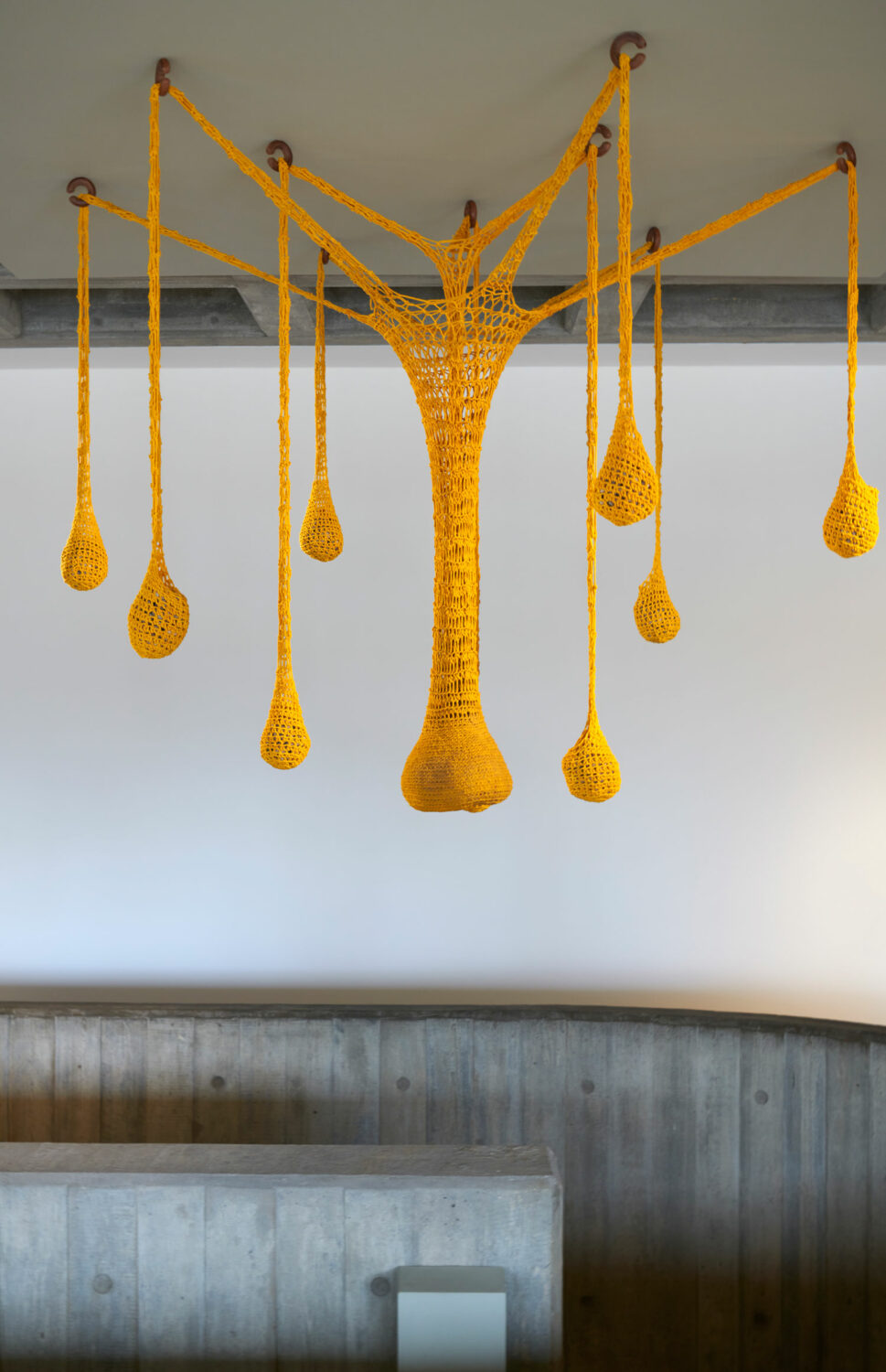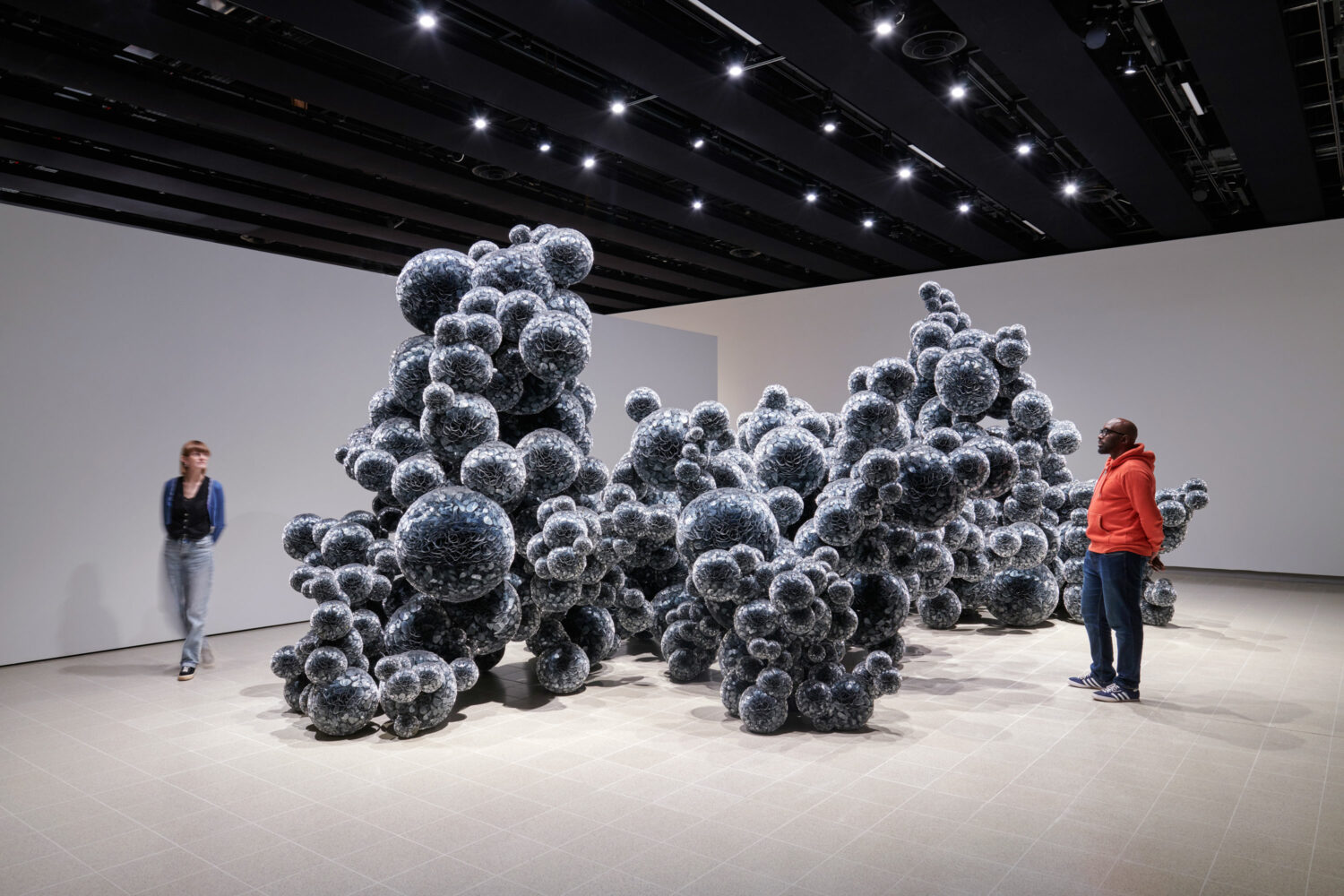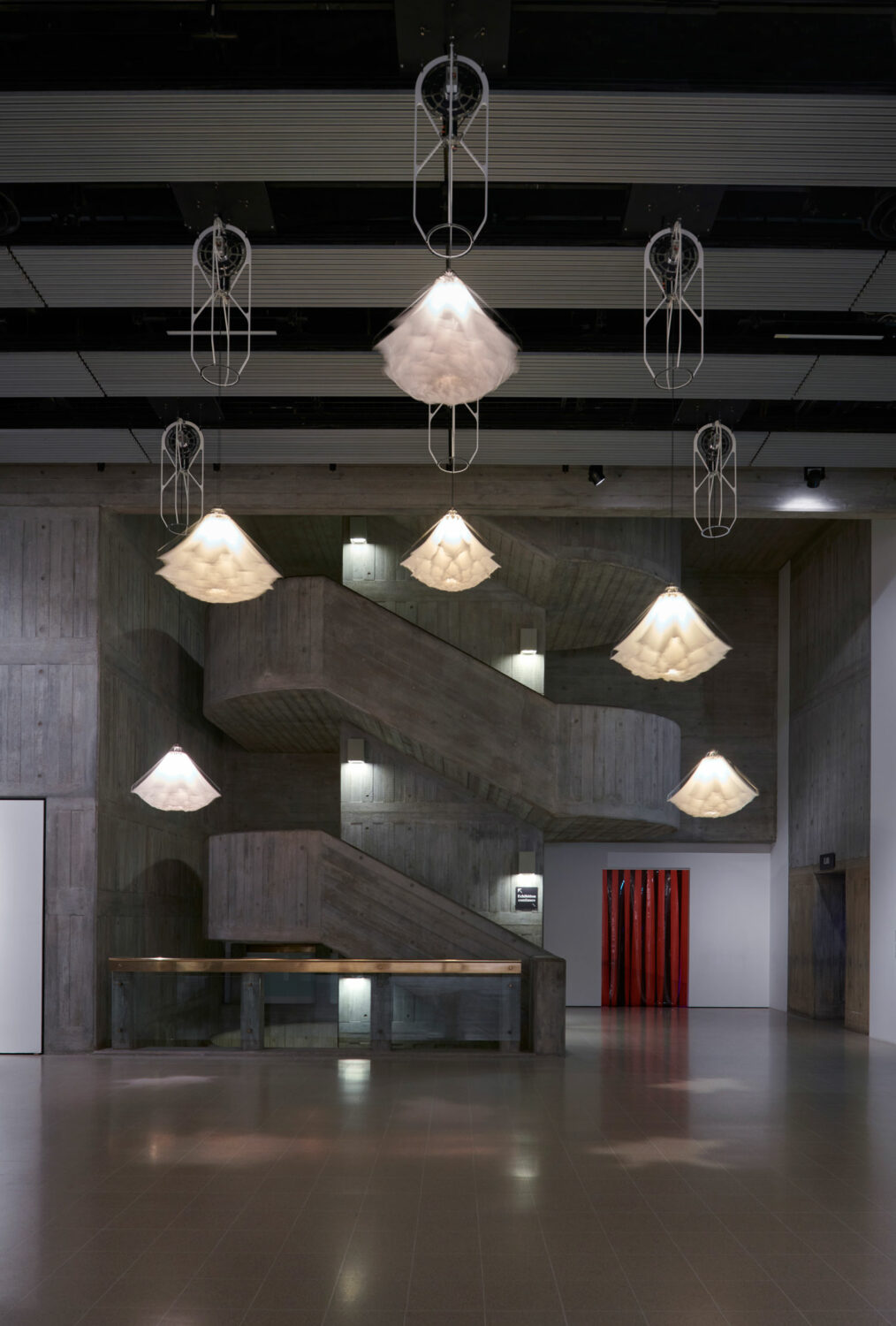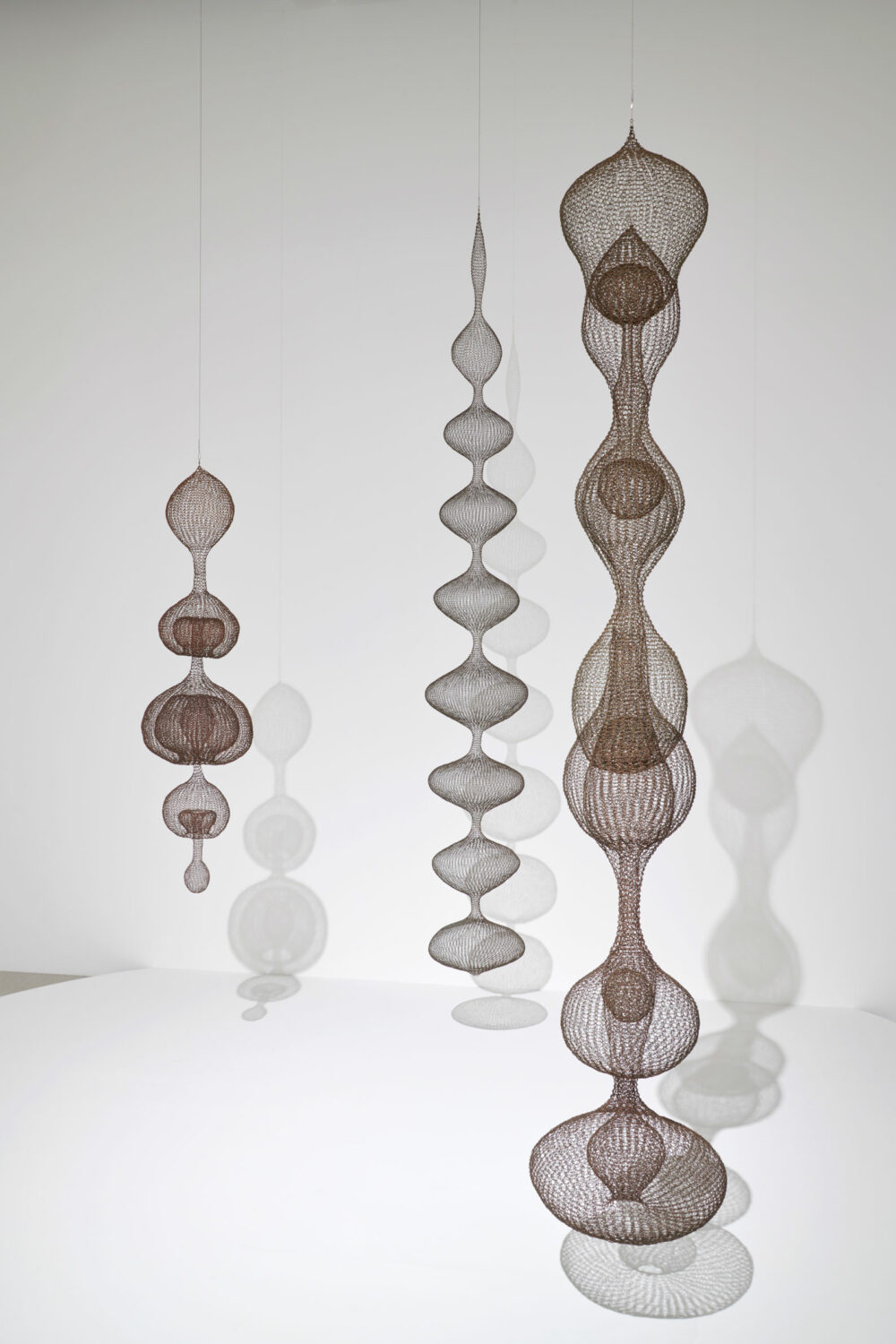When Forms Come Alive: 60 Years of Restless Sculpture
By Keshav AnandOpen now and running until 6 May 2024, the Hayward Gallery’s landmark exhibition, When Forms Come Alive, highlights the ways in which sculptors across generations have been inspired by movement, flux, and organic growth. The exhibition features the works of 21 international artists, including Ernesto Neto, Franz West, Senga Nengudi, DRIFT, Ruth Asawa, Marguerite Humeau, Nairy Baghramian, Phyllida Barlow, Lynda Benglis, Tara Donovan, Martin Puryear, and Teresa Solar Abboud, among others.
Anusha Mistry, from the Hayward Gallery’s curatorial team, tells Something Curated: “Phyllida Barlow described how sculpture can be “restless” because of how the viewer must manoeuvre around it – you can never quite hold on to what it is. With this exhibition we wanted to examine the shapeshifting nature of sculpture and offer visitors an exciting array of works that span several generations of artists whose work harnesses the irregular, the organic, the experiential and the unsettled when it comes to their approach to form.

The 21 artists in the show present sculptures of irregular forms and shapes that feel “alive” because of how they appear to be flowing, changing state, endlessly mutating, balancing or conjuring organic processes found in nature or within our own bodies. Many of the artists are inspired by forms of organic life, such as Holly Hendry, whose commission Sottobosco uses industrial materials to orchestrate a scene of microbial growth.
Hendry describes her work as “twitching with life” and this is definitely an aspect of sculpture that this exhibition intends to address. The sculptures in the exhibition might evoke circuits of flow or have multiple associations or illusions, whilst also having a tactile, haptic quality. In this sense, we hope that visitors will have a physical experience that goes beyond the conceptual, actively engaging all the senses in quite a visceral way.”

As Mistry points out, organic life is a key departure point for many of the artists in the show. Made from silk, Amsterdam-based studio DRIFT’s kinetic Shylights mimic the folding and unfolding of flowers that close at dusk. Elaborating on their concept, DRIFT explains to SC: “Certain types of flowers close at night, for self-defence and to conserve their resources. This highly evolved natural mechanism is called “nyctinasty” and inspired us to create Shylight.
The sculpture drops down, unfurling and withdrawing into itself again in a mesmerising choreography, mirroring the nyctinasty of real flowers. Contrary to man-made objects, natural beings (including people), are subject to constant metamorphosis and adaptation to their surroundings. Shylight is our answer to the question “How can inanimate objects mimic these natural evolutions and processes whilst expressing character and emotion?”

Elsewhere in the show, works by Franz West, Olaf Brzeski, and Matthew Ronay evoke the abject, comedic, and absurd. Their sculptures feature bulges and curves, prompting associations with living organisms or geological formations — and sometimes melting ice cream. EJ Hill’s expansive sculpture, reminiscent of a neon rollercoaster, recalls experiences of radical motion and visceral highs. The artist connects this to the politics of Black joy and the historical exclusion of African-Americans from certain US amusement parks.
Expanding further on the curatorial team’s approach to selecting the exhibiting artists, Mistry continues: “The ideas behind When Forms Come Alive are built on artists who playfully subverted the notion of monumentality in sculpture in the 60s and 70s. As such it was important to include the work of pioneering artists Ruth Asawa, Lynda Benglis and Senga Nengudi. Benglis and Nengudi’s post minimalist, process-oriented works resist geometry and remind us of the instability of forms.

With her airy, hanging sculptures inspired by organic life, Asawa took wire, which she described as an “impersonal,” hard material, and looped it using a basket weaving technique to create gentle and natural forms. These approaches defied the traditional principles of stillness, permanence and geometry that were prevalent in sculpture at the time.
The anti-monumental character is also important for Phyllida Barlow and Nairy Baghramian, whose deliberately awkwards forms sometimes feel transitory or ephemeral even if the materials seem robust and durable. The exhibition also includes younger generations of artists whose approaches to sculpture offer new perspectives of restlessness and vivacity, through their use of materials of juxtaposing properties, by evoking uncanny corporeality, referencing organic topographies or through their engaging use of implied or physical movement.”
Feature image: Installation view of Marguerite Humeau, When Forms Come Alive (7 February — 6 May 2024). Photo: Jo Underhill. Courtesy the Hayward Gallery.